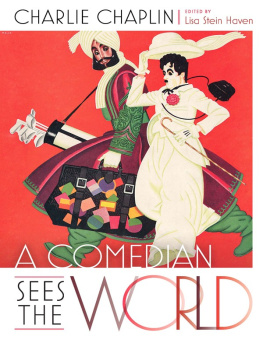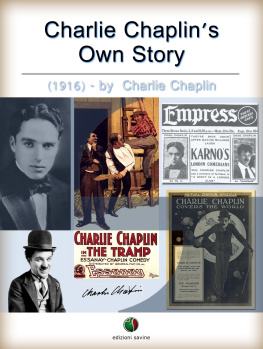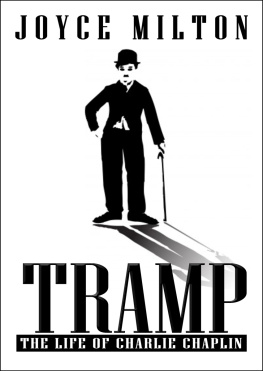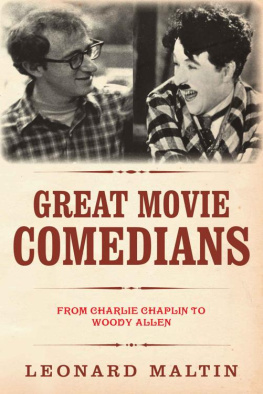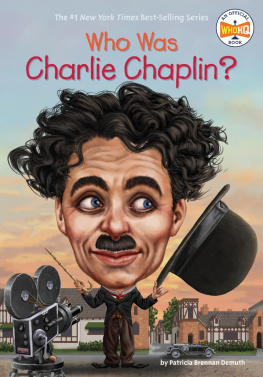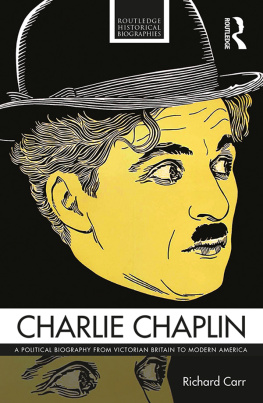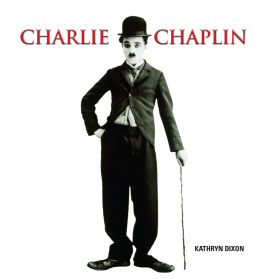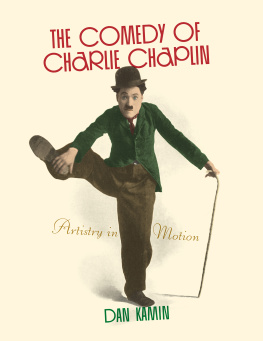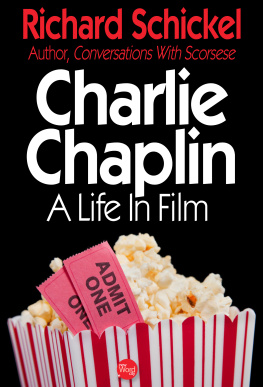Charlie Chaplin - A Comedian Sees the World
Here you can read online Charlie Chaplin - A Comedian Sees the World full text of the book (entire story) in english for free. Download pdf and epub, get meaning, cover and reviews about this ebook. year: 2014, publisher: University of Missouri Press, genre: Non-fiction. Description of the work, (preface) as well as reviews are available. Best literature library LitArk.com created for fans of good reading and offers a wide selection of genres:
Romance novel
Science fiction
Adventure
Detective
Science
History
Home and family
Prose
Art
Politics
Computer
Non-fiction
Religion
Business
Children
Humor
Choose a favorite category and find really read worthwhile books. Enjoy immersion in the world of imagination, feel the emotions of the characters or learn something new for yourself, make an fascinating discovery.
- Book:A Comedian Sees the World
- Author:
- Publisher:University of Missouri Press
- Genre:
- Year:2014
- Rating:5 / 5
- Favourites:Add to favourites
- Your mark:
- 100
- 1
- 2
- 3
- 4
- 5
A Comedian Sees the World: summary, description and annotation
We offer to read an annotation, description, summary or preface (depends on what the author of the book "A Comedian Sees the World" wrote himself). If you haven't found the necessary information about the book — write in the comments, we will try to find it.
A Comedian Sees the World — read online for free the complete book (whole text) full work
Below is the text of the book, divided by pages. System saving the place of the last page read, allows you to conveniently read the book "A Comedian Sees the World" online for free, without having to search again every time where you left off. Put a bookmark, and you can go to the page where you finished reading at any time.
Font size:
Interval:
Bookmark:

Introduction, notes, and appendices by Lisa Stein Haven,
copyright 2014 by
The Curators of the University of Missouri
University of Missouri Press, Columbia, Missouri 65201
Printed and bound in the United States of America
All rights reserved
5 4 3 2 1 18 17 16 15 14
Cataloging-in-Publication data available from the Library of Congress ISBN 978-0-8262-2040-0
 This paper meets the requirements of the American National Standard for Permanence of Paper for Printed Library Materials, Z39.48, 1984.
This paper meets the requirements of the American National Standard for Permanence of Paper for Printed Library Materials, Z39.48, 1984.
Jacket design: Mindy Basinger Hill
Interior design and composition: Richard Farkas
Typefaces: Adobe Caslon Pro, Mostra Nuova
ISBN-13: 978-0-8262-7333-8 (electronic)
This project would have been impossible without the kind assistance of many great people. Kate Guyonavarch and Josephine Chaplin of Association Chaplin in Paris offered access to any and all manuscripts, documents, etc., housed at Progetto Chaplin in Bologna, without which I could not have completed this project. Kate went above and beyond her call of duty to offer me tireless support, hospitality, and friendship. Thanks also to her assistants, Claire Byrski and Charlie Sistovaris. My thanks to Celia Cenciarelli of Cineteca di Bologna for her enthusiasm and commitment to helping me complete this project, and to Gian Luca Farinelli for his vision of what this book should feel and look like. My thanks to Evelyn Lthi-Graf of the Archives de Montreux who provided much needed assistance and support during my research of the Chaplin archives housed in that facility. And, finally, thanks to Kris Teters, Betty Pytlik, Carey Snyder, Lori Rieder Lammerding, and Carl Wilson for offering their continued comfort and support over the course of this project.

All images from Chaplin films made from 1918 onwards.
Copyright Roy Export Company Establishment.
Charles Chaplin and the Little Tramp are trademarks and/or service marks of Bubbles Inc. S.A. and/or Roy Export Company Establishment, used with permission.
The World Crisis in Dumb Show. The genius for using sound without syllables, which was so effective in his last film, can adapt itself to any locality, any necessity for expression. One imagines the little comedian in his usual picture make-up pleading soundlessly at Geneva for custard pies instead of poison gas. Or at Harbin he sits on a keg of powder and kicks his big, flat shoes against it while he shows a few Generals how to win. The Chinese sound effects in this scene should be good. Riding a Soviet tractor in the Russian fields, wearing a loin cloth and carrying his flexible cane in India, taking off his battered derby to an American bank that never failed, he can remain as silent, wistful and funny as ever in his old character.
New York Times, 15 April 1932
As the New York Times news writer suggests in this excerpt, Charlie Chaplin was (1) often conflated with his film persona, the Little Tramp, and (2) viewed as seemingly at home in diverse locations and situations across the worlds landscape. Chaplin took advantage of the juxtaposition of these two phenomena twice during his long forty-year residence in the United States, in 1921 and in 193132. Each of these trips followed the completion of a film that marked significant risk on Chaplins part, as well as a period of some personal scandal publicized in the press.
When Chaplin left for London in September 1921, he had recently completed his first feature comedy, The Kid. The film was important for several reasons. First, as Charles Maland points out, it followed close on the heels of two relative failures, Sunnyside (1919) and A Days Pleasure Copyrighted by the International Features Service, the article would have appeared in newspapers throughout Americas heartland, thereby presenting Chaplin as a real person who contradicted his film persona.
His 1931-32 trip was propelled by much the same set of conditions. City Lights, the film he released just before his departure, despite its synchronized sound track, was essentially a silent film. By 1931, sound technology had been in place in the film business for more than five years.moralizing middle America. In Europe, there was no split, for most refused to judge Chaplins art on the basis of this particular human frailty. In an essay entitled Hands Off Love, printed in transition in September 1927, a group of thirty-one European artists and intellectuals, including Louis Aragon, Andr Breton, Marcel Duhamel, Max Ernst, Man Ray, and others transmitted their own comments on Chaplins situation to the public:
A Dogs Life. That is at the very moment the life of a man whose genius wont win him his case; of one on whom everyones back will be turned, who will be ruined with impunity, from whom all of his means of expression will be taken, who is being demoralized in the most outrageous fashion, for the benefit of a miserable, spiteful little bourgeoisie, and for the sake of the grandest public hypocrisy possible to imagine. A dogs life. Genius is nothing to the law when matrimony is at stake, the blessed state of matrimony. And anyway as we know, genius is never anything to the law, never. (10)
The American government chose this inconvenient moment (20 January, to be precise) to sue Chaplin for back taxes, seizing and sealing all of his assets, including the studio (Maland 97). By 1931, though, despite the predictions listed in the essay cited above, public rancor had largely been shelved, but the specter of its ability to arise at any moment must have added to the tense atmosphere that surrounded the production of City Lights. As I have tried to show, both junctures (the release of The Kid in 1921 and the release of City Lights in 1931) were tentative ones in Chaplins career and might make or break him professionally. As such, these junctures demanded strong and innovative promotional texts. At each of these points, the travel narrative comes to the rescue, for following each tour, Chaplin released a promotional travel book: My Trip Abroad (1922) and A Comedian Sees the World (193334) respectively.
Historical Context
The world Chaplin decided to tour in early February 1931 was in crisis, both economic and political. In Germany, Hitler had been agitatingthe populace against the tenets of the Treaty of Versailles since the late 1920s. The British ambassador in Berlin, Sir Horace Rumbold (who was to accompany Chaplin to the theater in Berlin in March 1931), in a memo to his financial adviser in March 1929, warned that if war reparations were set at the rumored two million marks, there may be a pretty good row over here leading perhaps to the holding of fresh elections (qtd. in Gilbert 757). Nazis and other political groups in Germany became less and less willing to bear the brunt of World War I guilt on their shoulders. Also, the country itself became less and less able to pay. In fact, the gold standard was causing major problems to the economies of countries across the world. As Carroll Quigley suggests, it was estimated that the worlds stock of gold money needed to increase by 3.1 percent per year in the 1920s to support the worlds economic development with stable prices on the gold standard. The production of new gold after 1920 was below this rate (340). This, combined with the League of Nations recommendation that all countries get on the gold standard, caused a gold rush and subsequent gold shortage. The fact that gold was no longer being distributed evenly among countriesas occurred before World War Isuggested as well that the economic system of that prewar period was no longer adequate. In fact, the United States practice of extending credit indiscriminately at this time caused the Federal Reserve to curtail this practice, with the result that more credit was extended to stock market speculators than before, even though the Reserves measure was supposed to alleviate this problem. The resulting stock market crash on 24 October 1929 in New York sent shock waves around the world. Possibly one of the worst years for Europe and especially for countries like Austria and Britain was 1931.
Font size:
Interval:
Bookmark:
Similar books «A Comedian Sees the World»
Look at similar books to A Comedian Sees the World. We have selected literature similar in name and meaning in the hope of providing readers with more options to find new, interesting, not yet read works.
Discussion, reviews of the book A Comedian Sees the World and just readers' own opinions. Leave your comments, write what you think about the work, its meaning or the main characters. Specify what exactly you liked and what you didn't like, and why you think so.

